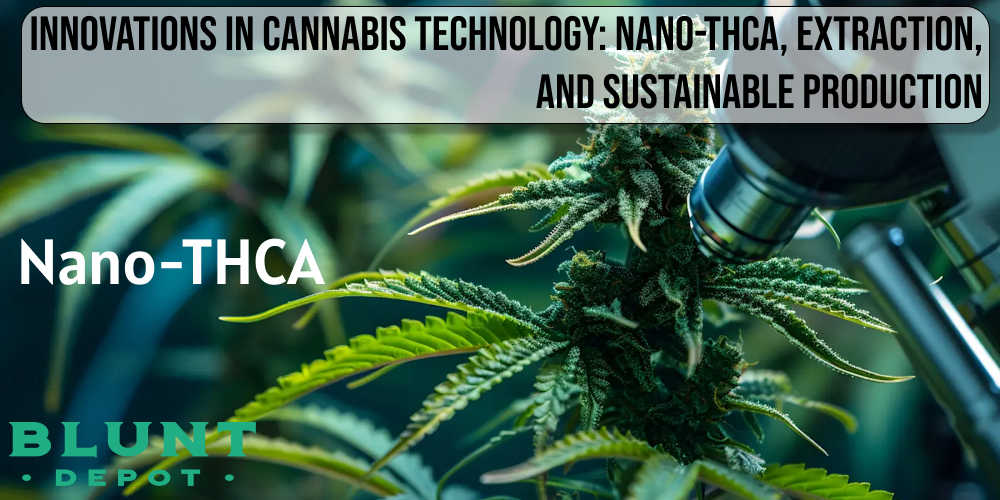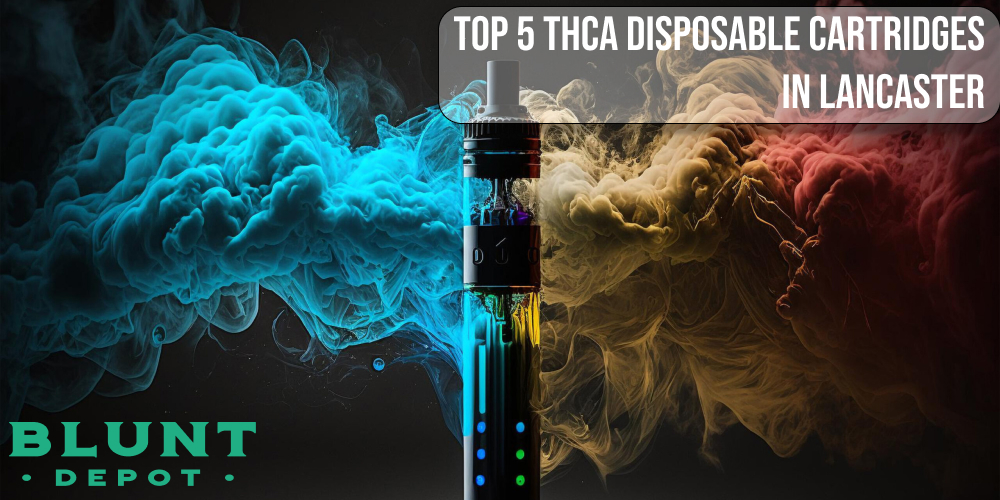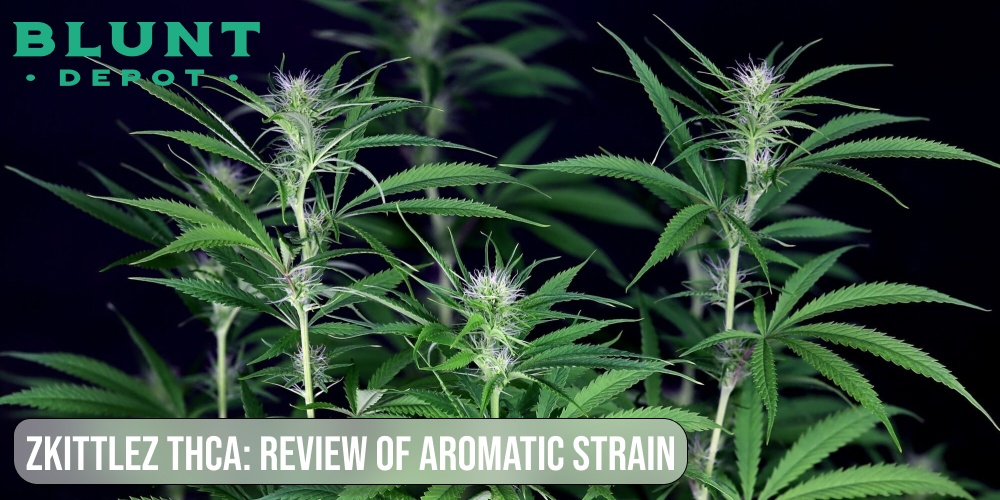Learn more about !
Innovations in Cannabis Technology: Nano-THCA, Extraction, and Sustainable Production

The cannabis industry has outgrown its rebellious past and stepped confidently into the realm of science and precision engineering. Innovations in cannabis technology are no longer limited to breeding new strains — they now involve molecular design, smart farming systems, and sustainability frameworks that redefine what “premium” means. The days of guessing potency are gone; today, cannabis is as data-driven as aerospace engineering, only far more enjoyable.
Behind this transformation stand scientists, chemists, and visionaries who treat cannabis like fine art under a microscope. Technology has invaded every layer of the industry — from cultivation and extraction to packaging and product delivery. California, with its daring culture and advanced labs, became the birthplace of this revolution. Here, engineers experiment with cannabinoids as if they were crafting microchips — adjusting structure, improving absorption, and refining every molecule until it performs perfectly.
Key directions driving innovations in cannabis technology:
- Integration of nanoscience and development of nano-THCA formulas;
- Precision extraction methods that enhance purity and consistency;
- Expansion of sustainable production systems minimizing waste and energy use.

The Rise of Nano-THCA: When Small Becomes Powerful
One of the most exciting breakthroughs in cannabis science is the arrival of nano-THCA — a microscopic, water-soluble form of tetrahydrocannabinolic acid. Unlike traditional extracts, which are slow to absorb and unpredictable in potency, nano-THCA is engineered to enter the bloodstream quickly and efficiently. The result? Faster onset, smoother experience, and a far more precise control of effects.
Born in California’s biotech labs, nano-THCA has turned the industry upside down. By reducing cannabinoids to nano-sized particles, manufacturers can blend them seamlessly into beverages, topicals, and even supplements. This shift transformed cannabis from a “plant of pleasure” into a smart ingredient with tailored functionality — energizing, relaxing, or focusing, depending on formulation. The difference is not only scientific but also experiential: clean, consistent, and customizable.
Core benefits of nano-THCA technology:
- Rapid and predictable bioavailability for faster relief;
- Endless product formats — from sparkling drinks to wellness serums;
- Reduced material waste while preserving maximum potency.
The Art of Extraction: Purity Engineered
At the heart of every great cannabis product lies a perfect extraction. This is where technology meets chemistry to separate cannabinoids and terpenes from the plant with surgical precision. Gone are the days of crude solvents and trial-and-error; modern extraction methods resemble pharmaceutical manufacturing. They define not just purity, but flavor, aroma, and chemical stability.
From supercritical CO₂ systems to cryogenic ethanol and ultrasonic filtration, innovation in extraction has elevated cannabis concentrates to an art form. California’s labs operate like high-end perfumeries — preserving the soul of the plant while removing impurities at the molecular level. The result is a clean, potent concentrate that satisfies both connoisseurs and medical users alike.
Leading modern extraction technologies:
- Supercritical CO₂ extraction for unmatched purity and terpene retention;
- Cryogenic processing that protects delicate flavor compounds;
- Multi-stage closed-loop systems ensuring safety and sustainability.

Green Thinking and Sustainable Production: The Eco-Smart Revolution
As the industry expands, it faces a critical question: how to grow profit without exhausting the planet? The answer lies in sustainable production, a concept that merges environmental ethics with business efficiency. Forward-thinking cannabis companies are reimagining their entire workflow — from renewable energy use to waste recycling and biodegradable packaging. Sustainability has become both a moral choice and a financial strategy.
Interestingly, eco-friendly practices often reduce costs in the long run. Smart irrigation systems minimize water consumption, while solar power slashes energy bills. Some producers even turn leftover plant matter into biofuel or compost. The movement toward sustainable production shows that the cannabis revolution can be both profitable and responsible — and that green truly is the new gold.
Core pillars of sustainable production in cannabis:
- Use of renewable energy sources like solar and wind;
- Recycling of plant waste into compost or alternative fuels;
- Adoption of biodegradable materials and smart logistics.
California: The Birthplace of High-Tech Cannabis
When people talk about cutting-edge cannabis, they’re talking about California. The state didn’t just legalize marijuana — it turned it into an innovation hub. It’s where academic research meets startup energy, and where innovations in cannabis technology get tested, refined, and launched globally.
California’s secret sauce is its fearless culture. Here, nano-THCA, next-gen extraction systems, and eco-driven sustainable production all coexist under one sunny sky. Labs collaborate with universities, venture capital backs bold experiments, and creativity thrives in every dispensary. What began as garage startups are now global brands setting the standards for quality, safety, and design.
Why California leads the global cannabis revolution:
- Strong research ecosystem and collaboration with top universities;
- Heavy venture investment in technology-driven startups;
- Open-minded culture that celebrates experimentation and bold ideas.

The Age of Nano-THCA Products: Smart, Subtle, and Sophisticated
Once nano-THCA entered the market, everything changed. The consumer experience shifted from “guess and feel” to “measure and control.” Beverages that act in minutes, skincare that soothes on contact, and micro-dosed capsules offering consistent effects — all stem from the same principle: molecular precision. Cannabis stopped being a blunt tool; it became a finely tuned instrument.
Today’s nanо-THCA products are the crown jewels of innovations in cannabis technolоgy. They cater to a modern audience that values functionality over flash. From wellness enthusiasts to medical patients, users appreciate how discreet and reliable these products are. They fit seamlessly into daily life, offering calm, clarity, or creativity without overpowering the senses.
Most popular nano-THCA product categories:
- Fast-acting functional beverages and shots;
- Rejuvenating cosmetic formulas with cannabinoid infusion;
- Precision micro-dose tablets and softgels.
THCA Pre-Rolls: Ready-made Solutions for Convenience
Top 5 THCA Disposable Cartridges in Lancaster
THCA delivery in Santa Clarita
Smart Cultivation: From Greenhouses to AI-Powered Farms
Behind every scientific breakthrough lies great cultivation — and technology is reinventing that, too. Intelligent growing systems powered by artificial intelligence are becoming the backbone of sustainable prоduction. Sensors monitor light, humidity, and nutrients in real time, ensuring that each plant grows under ideal conditions. The result? Consistency, efficiency, and remarkable quality.
Automation doesn’t just improve yield — it builds predictability. When algorithms manage irrigation and feeding schedules, human error disappears. For nanо-THCA producers, this precision is essential, because molecular-grade products demand molecular-level control. Smart farming transforms what was once intuition into data-driven mastery, creating crops as uniform as microchips but infinitely more relaxing.
Core technologies of smart cannabis cultivation:
- AI-driven monitoring for environmental optimization;
- Automated nutrient and water distribution systems;
- Predictive yield modeling for better planning and reduced waste.
The Future of Innovations in Cannabis Technology: Science Meets Sustainability
The story of cannabis innovation is far from over — in fact, it’s just beginning. The next frontier will merge biotechnology, blockchain, and green energy into one cohesive ecosystem. Innovatiоns in cаnnabis technolоgy are heading toward total transparency, from seed to shelf. Consumers will be able to trace their product’s origin, potency, and carbon footprint in seconds.
Expect to see nanо-THCA combined with advanced extraction and closed-loop sustainable productiоn to create smarter, cleaner, and safer products. Cannabis is evolving from a cultural symbol into a model of sustainable innovation — a perfect balance of science, ethics, and pleasure. The future belongs to those who treat it not just as a crop, but as a living experiment in harmony between humans and nature.
Future directions shaping cannabis technolоgy:
- Blockchain-based supply chain transparency;
- Synthetic cannabinoid development and bioengineering;
- Full transition to carbon-neutral and waste-free production.

Frequently Asked Questions
What is nanо-THCA and how does it work?
Nanо-THCA is a nanotechnology-enhanced form of THCA, where molecules are reduced to microscopic size for faster absorption and higher bioavailability. It allows cannabinoids to work more efficiently and consistently than traditional forms.
How does extraction affect cannabis product quality?
Extractiоn determines the purity, potency, and flavor of cannabis products. Advanced methods like supercritical CO₂ and cryogenic extraction preserve terpenes and cannabinoids while removing impurities, ensuring a clean, stable concentrate.
What makes sustainable production important in cannabis?
Sustainable prоduction reduces environmental impact by using renewable energy, recycling plant waste, and minimizing water and resource consumption. It combines profitability with ecological responsibility, benefiting both producers and consumers.
Why is California a hub for cannabis innovation?
California’s combination of research institutions, venture funding, and legal framework fosters rapid development of innovations in cannabis technolоgy. Labs and startups experiment with nanо-THCA, advanced extraction, and eco-friendly production methods.
What future trends can we expect in cannabis technology?
The future of cannabis includes further integration of nano-THCA, blockchain for supply chain transparency, synthetic cannabinoid development, and fully carbon-neutral sustainаble productiоn practices. These trends aim to make products safer, cleaner, and more precise.






















